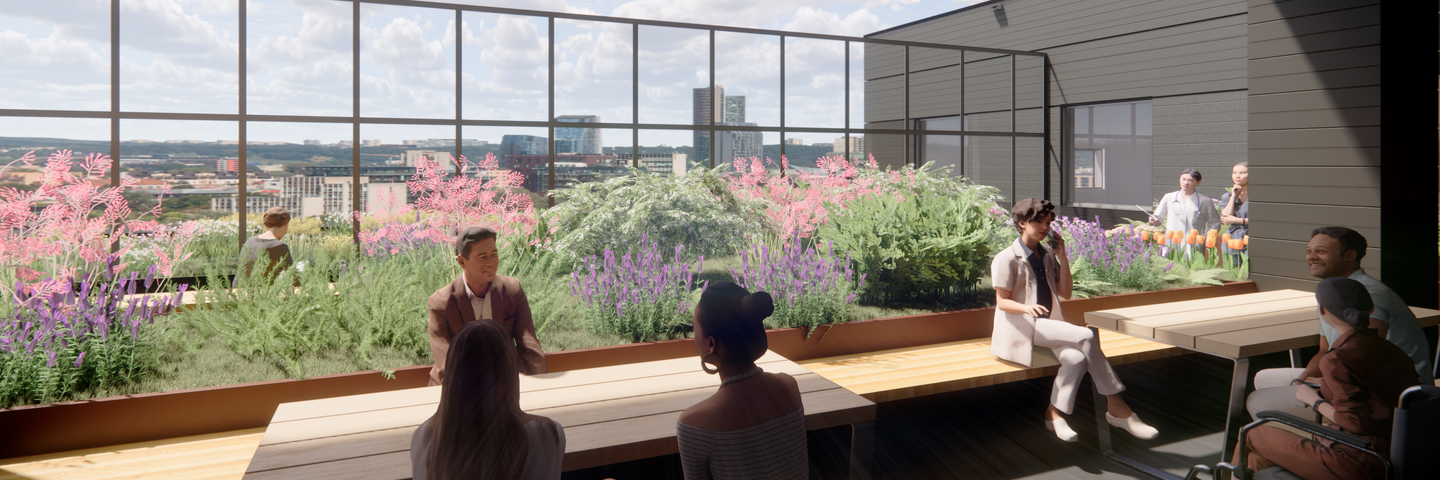Sustainability
Leading the way in more sustainable health care

Building Green
We’re building the new St. Paul’s Hospital to be more sustainable and high performance. Our approach to green hospital design reflects Providence’s foundational principle to reduce our environmental impact. After all, earth-friendly health care is integral to the well-being of each of us, our communities and our planet.
The new St. Paul’s hospital will be LEED-certified, an internationally recognized green building standard. The sustainability efforts extend far beyond certification requirements, exceeding the stringent benchmarks set by the City of Vancouver for sustainable site design, access to nature, green mobility, zero-waste planning, and low-carbon energy use.
Planting for wellness
The person-centered design of the hospital also integrates more spaces for holistic health and wellness, with green spaces that both reduce our environmental impact and improve the health and wellness of patients, visitors, and staff.
Over 200 trees will be planted on site, and landscaping design will emphasize drought-tolerant and native species. These plants will be chosen by a knowledge keeper and ethnobotanist from the Squamish Nation to honour the Host Nations and Indigenous patients who use the hospital.
A new Wellness Walkway will encircle the campus with paths that celebrate the site’s rich cultural history and link to our surrounding communities.
Resilient design
We're building the hospital for today and for the future. The new St. Paul’s Hospital will be climate resilient, able to withstand rising temperatures, extreme weather, earthquakes, and flooding.
The hospital is being built 5 metres above the sea level rise predicted by the year 2100. Critical elements, such as mechanical, electrical, and communications equipment will be located well above ground based on best practices and lessons learned from disasters such as Hurricane Sandy.
The design for the building’s mechanical systems for air quality and cooling so the hospital can continue to operate even during extreme heat.
As a post-disaster facility, the hospital will be able to operate self-sufficiently during and after a potential event, with emergency power and fuel supplies that can support the entire hospital for 72 hours.